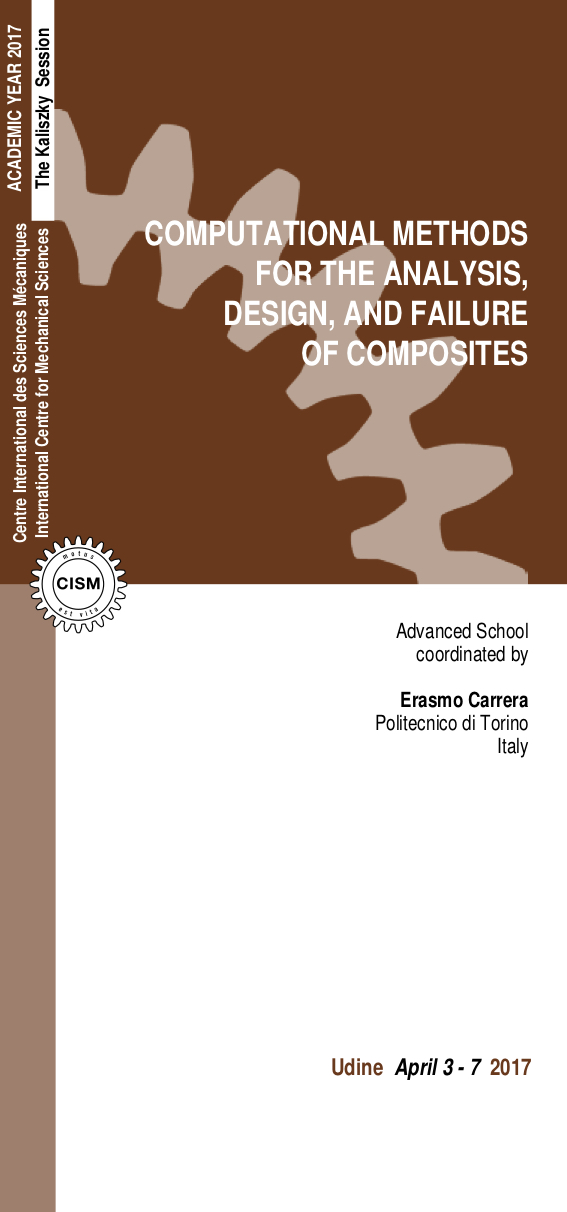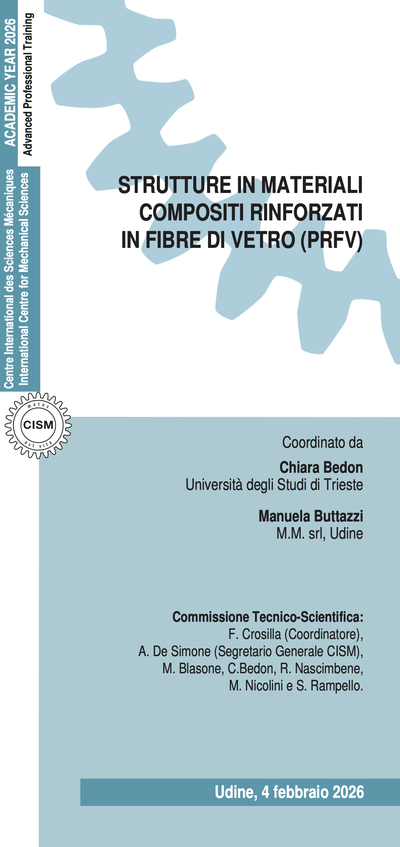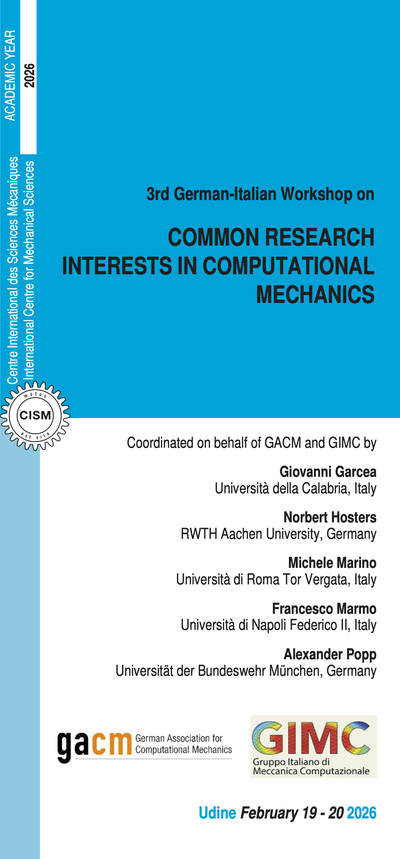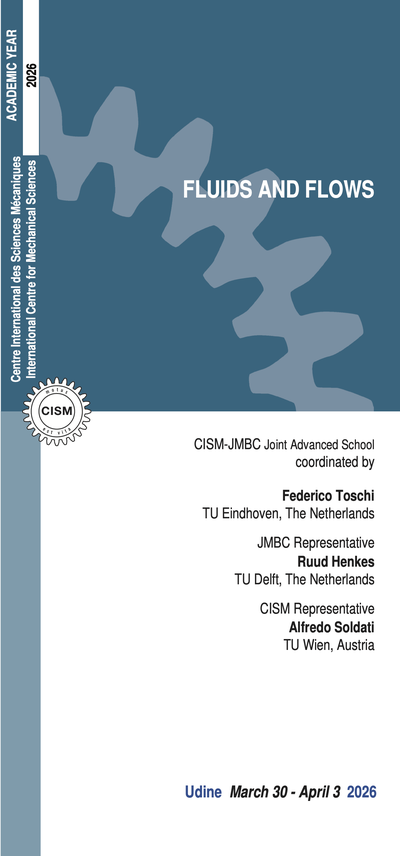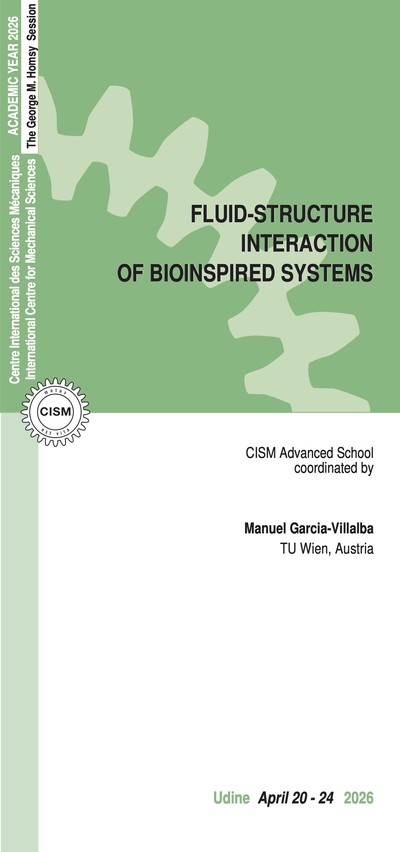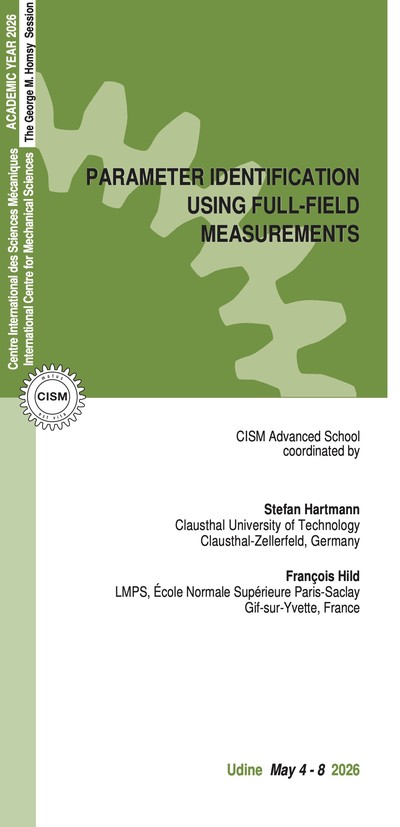This course aims at providing fundamental and advanced concepts for the analysis and design of composite materials and structures. In particular, lectures cover the following main topics: structural theories and finite element modelling, failure and damage analysis, optimization and tailoring, multiscale approaches, impact problems, manufacturing, and applications. The lecturers have strong professional backgrounds in material science and structural mechanics. They are currently involved in many international research projects on composites, and industrial partnerships, including Airbus, Boeing, Embraer, and NASA. Most of the Lecturers are currently involved in Marie Curie European Training Network projects on composite materials and structures, FULLCOMP (www.fullcomp.net) and COACH (http://www.coach-etn.eu/). The first module of the course provides basic concepts related to laminated structures, the theory of anisotropic bodies, and the peculiarities of advanced composite materials. Then, the course continues with a review of classical and advanced theories and computational models for laminated structures. Particular attention is paid to beams, plates, and shells, and including guidelines and recommendations for a proper finite element modeling. The second module focuses on the manufacturing processes and the applications of composites. First, this module deals with typical issues such as joining and coating. Then, an overview follows on advanced manufacturing for aerospace applications, glasses, and composites for health care, energy production, and ICT. Recent advances in low-cost composites and composites from waste close this module. The third module offers insights on design and optimization of composite structures. Lectures deal with some of the most important methods related to tailoring, tow placement, microstructural tailoring, suppression and mitigation of buckling, multistability, and morphing. The fourth module deals with the multiscale analysis, failure, and delamination. After an introduction to the modeling of composite material and structures, the modelling damage and failure of laminates follow. Then, the core part is on details on multiscale approaches for the simulation of composite material and structure at the micro meso and macro scales. The fifth module is on impact problems. First, contact laws and impact dynamics concepts open this module. Then, assessments on some of the most important impacts for composites follow; that is, low-velocity impact damage, ballistic impact, explosions. Experimental techniques, numerical models, and guidelines on the design for impact resistance close this module. The sixth module of the course deals with the design of lightweight, composite shells. This module covers some of the most important issues related to composite shells; that is stability, nonlinearity, imperfections, and probabilistic optimization. Furthermore, an introduction to the material behavior at different scales, quasi-static and fatigue failure, and the design and analysis of structural joints follow. The course is addressed to most of the European Ph.D. schools with curricula in structural mechanics, and material science. Also, researchers and professionals dealing with the design and analysis of advanced structures for aeronautics, space, naval, automotive, biomedical applications, and material science could be interested in the course as well as researchers and professionals dealing with the design and analysis of advanced structures for aeronautics, space, naval, automotive, and biomedical applications.
Abrate, Serge. Impact on laminated composite materials. Applied mechanics reviews 44.4 (1991): 155-190. Abrate, Serge. Soft impacts on aerospace structures. Progress in Aerospace Sciences 81 (2016): 1-17. G. Lubineau, P. Ladevèze; Construction of a micromechanics-based intralaminar mesomodel and illustrations in ABAQUS/Standard, Computational Materials Science 43 (2008) 137–145. O. Allix, N. Feld, E. Baranger J-M Guimard, Cuong Ha-Minh, The compressive behaviour of composites including fibre kinking: modelling across the scales, Meccanica 49-11)(2014) 2571-2586. Carrera E., Cinefra M., Petrolo M., Zappino E. (2014) Finite Element Analysis of Structures through Unified Formulation. John Wiley & Sons Ltd. Carrera E. Theories and Finite Elements for Multilayered, Anisotropic, Composite Plates and Shells, Archives of Computational Methods in Engineering (2002), 9, pp. 87-140. “Ceramic Matrix Composites: Materials, Modeling and Technology” edited by Narottam P. Bansal and Jacques Lamon, in particular, Chapter 19 “Integration and Joining of Ceramic Matrix Composites”, Monica Ferraris and Valentina Casalegno. Salvo, M., Casalegno, V., Rizzo, S., Smeacetto, F., Ventrella, A., Ferraris, M. Glasses and glass-ceramics as brazing materials for high-temperature applications (2013) Advances in Brazing: Science, Technology and Applications, pp. 525-544. M. Vogler, R. Rolfes, P.P. Camanho (2013): Modeling the inelastic deformation and fracture of polymer composites – Part I: Plasticity model, Mechanics of Materials 59, pp. 50-64. B. Kriegesmann, E.L. Jansen, R. Rolfes (2012): Semi-analytic probabilistic analysis of axially compressed stiffened composite panels, Composite Structures 94, pp. 654-663. Z. Wu, G.Raju and P.M. Weaver, Framework for the Buckling Optimization of Variable-Angle Tow Composite Plates, AIAA Journal, 53, 12, 2015. X Lachenal, S Daynes, PM Weaver, Review of morphing concepts and materials for wind turbine blade applications, Wind Energy 16 (2), 283-307.
Serge Abrate (None)
7 lectures on: Impact on Composite StructuresContact laws. Impact dynamics. Low-velocity impact damage. Ballistic impact. Impact response of laminated and sandwich composites. Experimental and numerical models. Effect of explosions on sandwich structures. Design for impact resistance.
Olivier Allix (None)
7 lectures on: Multiscale models and modelling and simulation of delamination failureMicro-meso modelling of damage and failure of laminates. Identification Multiscale approaches for the simulation of composite material and structure at the micro meso and macro scales.
Erasmo Carrera (None)
5 lectures on: Guidelines for the Structural Modeling of Composite StructuresDefinition of laminated structures. Basic concepts and theory of anisotropic bodies. 3D, 2D and 1D problems. Peculiarities of advanced composite materials. Review of classical and advanced theories and computational models for laminated structures: beams, plates, and shells. Guidelines for the finite element modeling. Introduction to the Carrera Unified Formulation and the Component-Wise Approach.
Monica Ferraris (None)
6 lectures on: Production and Applications of Composite Materials for Health Care, Energy Production, Aerospace and ICTManufacturing and production of composites. Joining and coating techniques. Advanced manufacturing for aerospace applications. Glasses and composites for health care, energy production and ICT. Low-cost composites. Composites from waste.
Raimund Rolfes (None)
5 lectures on: Design of Shell Structures and Material and Failure ModelsStability, nonlinearity, imperfections, probabilistic optimization. Material behavior at different scales, quasi-static and fatigue failure. Design and analysis of structural joints.
Paul Weaver (None)
6 lectures on: Design and Optimization of Composites, Tailoring, and Tow Placement MethodsDesign and optimization of anisotropic composite structures. Tailoring and tow placement. Microstructurally tailored composites. Suppression and mitigation of buckling phenomena. Multistability and morphing.
The registration fee is 575.00 Euro + VAT taxes*, where applicable (bank charges are not included). The registration fee includes a complimentary bag, four fixed menu buffet lunches (on Friday upon request), hot beverages, downloadable lecture notes and wi-fi internet access. Applicants must apply at least one month before the beginning of the course. Application forms should be sent on-line through our web site: http://www.cism.it. A message of confirmation will be sent to accepted participants. If you need assistance for registration please contact our secretariat. Applicants may cancel their course registration and receive a full refund by notifying CISM Secretariat in writing (by email) no later than two weeks prior to the start of the course. If cancellation occurs less than two weeks prior to the start of the course, a Euro 50.00 handling fee will be charged. Incorrect payments are subject to Euro 50.00 handling fee. A limited number of participants from universities and research centres who are not supported by their own institutions can be offered board and/or lodging in a reasonably priced hotel or student dormitory, if available. Requests should be sent to CISM Secretariat by February 3, 2017 along with the applicant's curriculum and a letter of recommendation by the head of the department or a supervisor confirming that the institute cannot provide funding. Preference will be given to applicants from countries that sponsor CISM. Information about travel and accommodation is available on our web site, or can be mailed upon request.
* Italian VAT is 22%.
